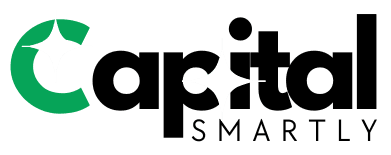advertisement
Over 60% of Canadian post-secondary students use loans to pay for school. Understanding student loans is key for achieving academic goals. This guide covers loan types, applications, repayment, and other financial aid options.

Navigating Canadian student loans can be tricky for new and mature students alike. But with the right info, you can make smart choices for your future. We’ll explore federal and provincial loans, scholarships, and bursaries to help you plan.
Understanding Student Loans in Canada
Student loans in Canada can be complex. There are several types available, each with unique features. Let’s explore the options to help you decide.
Types of Student Loans
- Government-sponsored loans: These include federal and provincial loans, which provide funding for post-secondary education.
- Private student loans: Offered by banks and other financial institutions, these loans can supplement government assistance or serve as an alternative source of funding.
- Line of credit: Some students may opt for a line of credit, which offers flexible borrowing and repayment terms.
Federal vs. Provincial Loans
The Canada Student Loans Program (CSLP) offers federal student loans. Provinces and territories manage their own loan programs. Eligibility and repayment terms vary between federal and provincial loans.
Research the options in your region carefully. This will help you choose the best loan for your needs.
Eligibility Criteria
To qualify for student loans, you need to meet certain requirements. These include enrollment in a recognized post-secondary institution and demonstrating financial need.
Residency requirements also apply. Federal and provincial loan programs may have different criteria. Review the guidelines carefully before applying.
| Loan Type | Eligibility Criteria | Repayment Terms |
|---|---|---|
| Federal Student Loan | Full-time or part-time enrollment, Canadian citizenship or permanent residency, demonstrated financial need | Flexible repayment options, interest-free during studies, interest rates set annually |
| Provincial Student Loan | Varies by province/territory, often includes residency requirements and financial need assessment | Repayment terms may differ from federal loans, interest rates set by province/territory |
“Investing in your education through student loans can be a sound financial decision, but it’s crucial to understand the terms and conditions before taking on education debt.”
Application Process for Student Loans
Applying for Canadian student loans can be straightforward. This guide will help you understand loan types and deadlines. You’ll learn how to secure financial support for your education.
How to Apply for a Canadian Student Loan
The application process for Canadian student loans involves several steps:
- Determine your eligibility by checking the criteria set by the federal and provincial governments.
- Gather the required documentation, including proof of identity, proof of enrollment, and financial information.
- Complete the application form, either online or through a paper-based submission, depending on your province or territory.
- Submit the application and supporting documents by the specified deadlines to ensure timely processing.
- Monitor the status of your application and respond promptly to any requests for additional information or clarification.
Required Documentation
To complete the student loan application process, you will need to provide the following documentation:
- Government-issued identification (e.g., driver’s license, passport)
- Proof of enrollment in a eligible post-secondary institution
- Financial information, such as income statements, tax returns, and bank statements
- Any additional forms or supporting documents required by your province or territory
Important Deadlines
Meeting deadlines is crucial for getting financial aid. Missing them could hurt your chances of receiving assistance. Pay attention to these key dates:
| Deadline | Description |
|---|---|
| Application Submission | The final date by which you must submit your completed student loan application form and supporting documents. |
| Document Submission | The final date by which you must provide any additional documentation requested by the loan processing agency. |
| Disbursement Request | The deadline for requesting the disbursement of your approved student loan funds. |
Stay informed and proactive during the application process. This approach can boost your chances of getting college financing. With proper planning, you can secure funds to support your educational goals.
Repayment of Student Loans
Repaying student loans in Canada can be tough. But don’t worry! There are many options to make it easier. Let’s explore some strategies to handle this financial task.
Understanding Repayment Options
Canadian students have several repayment choices for their loans. Income-driven repayment plans adjust payments based on your earnings. Standard repayment plans follow a fixed schedule.
Research these options carefully. Pick the one that fits your financial situation best. This choice is key for successful loan repayment.
Interest Rates for Student Loans
Interest rates affect the total cost of repaying student loans. Federal and provincial loans may have fixed or variable rates. Variable rates change with market conditions.
Understanding these interest rates helps you make smart choices. You might find ways to lower your long-term student debt costs.
Loan Forgiveness Programs
- The Canada Student Loan Forgiveness for Family Doctors and Nurses program provides loan forgiveness for eligible healthcare professionals who practice in underserved communities.
- The Repayment Assistance Plan (RAP) offers support to borrowers experiencing financial hardship, potentially reducing their monthly payments or even suspending repayment altogether.
These programs can offer relief to student loan borrowers. Check if you’re eligible for any loan forgiveness initiatives. They could make a big difference!
| Repayment Option | Description | Potential Benefits |
|---|---|---|
| Income-Driven Repayment | Monthly payments based on the borrower’s income | Lower monthly payments, potential for loan forgiveness |
| Standard Repayment | Fixed monthly payments over a set time period | Predictable payment schedule, potentially lower total interest paid |
| Repayment Assistance Plan (RAP) | Reduced payments or suspension of repayment for borrowers experiencing financial hardship | Temporary relief from loan obligations, opportunity to regain financial stability |
Learn about loan repayment options, interest rates, and forgiveness programs. This knowledge helps you make smart choices about your student debt. With the right plan, you can manage your loans and reach your financial goals.
Financial Assistance Beyond Student Loans
College financing can be tricky, but there are many options beyond federal student aid. Scholarships, grants, bursaries, and work-study programs can help ease the financial load. Canadian students have access to various resources to fund their education.
Scholarships and Grants
Scholarships and grants are free money for education. They don’t need repayment, making them better than federal student aid or education debt. These awards often consider academic merit, financial need, or specific qualifications.
They come from various sources, including government, schools, and private organizations. The Canada Student Grants program offers need-based help to eligible students. Colleges and universities provide institutional scholarships to attract talented learners.
Private foundations, companies, and community groups also offer many scholarship opportunities. These can significantly reduce the need for education debt.
- Government-funded scholarships and grants, such as the Canada Student Grants program, provide need-based assistance to eligible students.
- Colleges and universities offer a wide range of institutional scholarships and grants to attract and support talented students.
- Private foundations, companies, and community organizations also provide numerous scholarship opportunities for students.
Bursaries and Work-Study Programs
Bursaries and work-study programs offer more financial help for Canadian students. Bursaries are need-based, free awards. Work-study programs provide part-time jobs on or off campus.
These options help cover educational costs without increasing education debt. Bursaries are given based on financial need. Work-study programs let students earn money while gaining valuable experience.
- Bursaries are typically awarded based on demonstrated financial need, allowing students to access additional college financing beyond federal student aid and education debt.
- Work-study programs enable students to earn money while gaining valuable work experience, contributing to their college financing without accruing further education debt.

Canadian students can fund their education more effectively by exploring various financial aid options. This approach helps minimize the long-term impact of education debt. It’s worth investigating all available resources.
Impact of Student Loans on Credit Score
Student loans can significantly affect your credit score. Your credit score matters for loans, renting, and job prospects. It’s vital for education debt holders to maintain a good score.
How Student Loans Affect Credit
Loan repayment reports to credit bureaus impact your credit score. Here’s how:
- Payment History: Timely payments boost your score. Late or missed payments hurt it.
- Credit Utilization: Student loans add to your debt load. This affects your credit utilization ratio.
- Length of Credit History: Long-term student debts contribute to your credit history length.
Managing Payments for Better Credit
Try these strategies to keep a healthy credit score while repaying student loans:
- Make Payments on Time: Set up automatic payments or reminders for due dates.
- Explore Repayment Options: Look into plans like income-based repayment to suit your finances.
- Monitor Your Credit Report: Regularly check for errors and address them quickly.
- Avoid Defaulting: Talk to your lender if you’re struggling. Defaulting can severely damage your score.
Understanding how student loans affect your credit score is crucial. Taking steps to manage your education debt sets you up for future financial success.
Student Loan Benefits and Drawbacks
Student loans can be both helpful and challenging for college education financing. They offer needed funds for higher learning but come with pros and cons. Let’s explore Canadian student loans to help you decide wisely.
Advantages of Taking Out Student Loans
- Access to Education: Student loans make post-secondary education possible for people from various financial backgrounds. They help fulfill academic dreams for many.
- Improved Earning Potential: College degrees often lead to better-paying jobs. This can improve long-term financial prospects for borrowers.
- Flexibility in Repayment: Canadian student loan programs offer various repayment options. These include income-based plans and grace periods for manageable debt repayment.
Potential Disadvantages
- Debt Burden: Student loans can grow over time. This may lead to significant debt, affecting financial stability and future choices.
- Interest Payments: Interest on student loans adds up quickly. It increases education costs and extends repayment time.
- Stress and Anxiety: Repaying student loans can cause worry. This might affect a person’s mental health and overall well-being.
It’s crucial to weigh the benefits and drawbacks of student loans when planning for college. Understanding education debt and exploring all options is key.
This approach helps make smart choices that match your academic and financial goals. Consider your future carefully before deciding on student loans.
| Benefit | Drawback |
|---|---|
| Access to Education | Debt Burden |
| Improved Earning Potential | Interest Payments |
| Flexible Repayment Options | Stress and Anxiety |
“Investing in your education through responsible student loans can be a valuable long-term strategy, but it’s crucial to understand the implications and manage the debt effectively.”
Resources for Students
Canadian students have many resources to help with student loans and financial aid. These include government websites and non-profit organizations. They offer valuable information and support throughout your education.
Government Resources
The Government of Canada has a website for student financial assistance. It covers federal student aid, loan consolidation, and loan forgiveness programs. You can find details on eligibility, application processes, and repayment options here.
Non-Profit Organizations
- The Canadian Federation of Students advocates for post-secondary students. They provide resources on financial aid and tuition fees.
- The Fondation Lafontaine offers financial counseling for students in Quebec. They provide information on loan forgiveness and scholarships.
- Student Aid BC’s website has information on loans, grants, and other aid for British Columbia students.
These resources help Canadian students understand financial aid better. They provide support to achieve educational goals. Explore them to find the help you need.
Recent Changes to Student Loan Policies
Student loan policies in Canada have changed significantly in recent years. The COVID-19 pandemic and new laws have greatly affected how students finance their education. These changes impact both current and future students.
Impact of COVID-19 on Student Loans
COVID-19 brought temporary relief measures for student loan borrowers. A key change was a six-month interest-free pause on student loans. This allowed borrowers to stop payments without extra interest.
Many people struggling with pandemic-related financial issues found this helpful. It gave them a much-needed break from loan payments.
New Legislation and Guidelines
The Canadian government has introduced new laws to improve loan repayment options. These changes focus on income-driven repayment plans. They aim to make student loan repayment more manageable for borrowers.
The new rules help those facing money troubles or income changes. They offer more support and flexibility in repayment.
- More people can now use income-driven repayment plans. These plans offer affordable payments based on financial situations.
- Repayment terms are now more flexible. Borrowers can extend repayment periods and adjust payments as needed.
- Lenders have improved their communication. Application processes are simpler, helping borrowers understand their options better.
These updates show the government’s dedication to helping student loan borrowers. They provide support for educational and financial success.
Tips for Managing Student Loan Debt
Student loan repayment can be tough, but effective strategies can help manage your education debt. A proactive approach and a solid plan are crucial for your financial success.
Creating a Budget
A comprehensive budget is key for successful loan management. Track your monthly income and expenses, including student loan payments. This helps identify areas to cut back and allocate more towards loan repayment.
Consider income-driven repayment plans. These cap your monthly payments based on income and family size. This ensures you meet obligations while maintaining financial stability.
Strategies for Paying Off Loans Faster
Explore alternatives to the standard repayment plan to pay off loans quicker. Make additional payments when possible, even small amounts. Rounding up monthly payments or making bi-weekly payments can reduce interest over time.
Look into loan consolidation or refinancing options. These may lower your interest rate and simplify the repayment process. Every little bit helps in managing your student loan debt.
FAQ
What are the different types of student loans available in Canada?
Canada offers various student loan options. These include federal loans, like Canada Student Loans, and provincial loans. Private loans, bursaries, and scholarships are also available.
What is the difference between federal and provincial student loans?
Federal loans are available to eligible students across Canada. Provincial loans are offered by individual provinces and territories. Eligibility criteria and terms may vary by jurisdiction.
How do I apply for a Canadian student loan?
To apply, complete the right form and provide supporting documents. Submit your application by the set deadlines. The process may differ for federal and provincial loans.
What are the repayment options for student loans in Canada?
Canadian borrowers have various repayment choices. These include fixed-payment plans, interest-only payments, and income-based repayment plans. Terms depend on the loan type and lender.
Are there any student loan forgiveness programs in Canada?
Yes, Canada offers several loan forgiveness programs. These include the Repayment Assistance Plan and forgiveness for family doctors and nurses. These programs can help eligible borrowers in certain situations.
How do student loans impact my credit score?
Responsible loan payments can boost your credit score. This shows your ability to pay on time. Late or missed payments can harm your creditworthiness.
What are some additional financial aid options beyond student loans?
Canadian students can explore other financial aid options. These include scholarships, grants, bursaries, and work-study programs. These alternatives can help reduce overall debt and make education more affordable.
How have recent changes to student loan policies impacted borrowers?
COVID-19 led to temporary changes in student loan policies. These include interest relief, payment deferrals, and expanded eligibility for assistance programs. Ongoing updates may affect repayment terms and forgiveness options.
What are some effective strategies for managing student loan debt?
Create a budget and prioritize loan payments. Explore income-driven repayment plans and forgiveness programs. Stay organized and communicate with lenders to manage repayment effectively.



